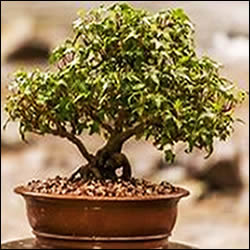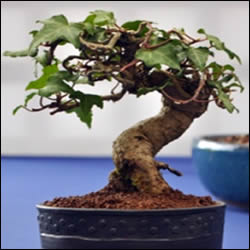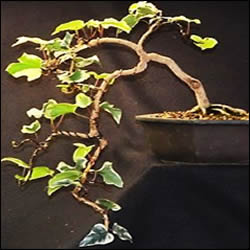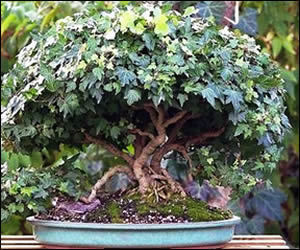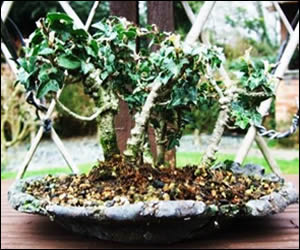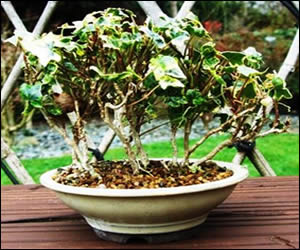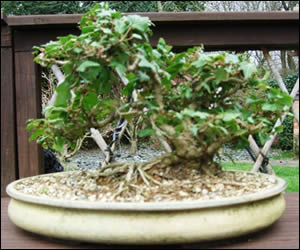Hedera is an evergreen climbing plant, growing to considerable height where suitable surfaces (trees, cliffs, walls) are available and also growing as groundcover where no vertical surfaces occur. It climbs by means of aerial rootlets with matted pads which cling strongly to the substrate.
It generally thrives in a wide range of soils prefers moist, shady locations and avoids exposure to direct sunlight, the latter promoting drying out in winter. Ivy is widely cultivated as an ornamental plant.
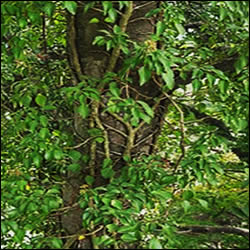
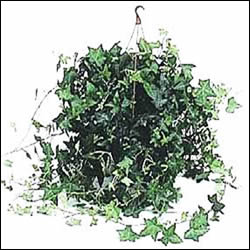
Suitability for bonsai
The only limit to an ivy's suitability for bonsai cultivation is its leaf-size; you need to be selective in which variety you choose. Leaf size can be overcome to a degree by using bonsai cultivation techniques, but only to a degree.
Ivies have two leaf types, with palmate lobed juvenile leaves on creeping and climbing stems and un-lobed cordate adult leaves on fertile flowering stems exposed to full sun, usually high in the crowns of trees or the tops of rock faces. The species differ in detail of the leaf shape and size.
Hedera algeriensis
The Algerian ivy, is a species of evergreen ivy native to the North African coast, including coastal mountains in Algeria. It can be plain green or have variegated cream edging to the leaves.
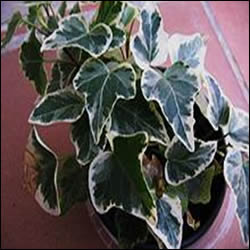
Hedera rhombea
The Japanese ivy is a species of ivy which is native to the coast of East Asia and some islands of East Asia. Rather large plain green leaves.
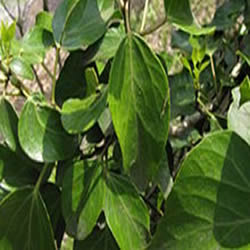
Hedera canariens
The leaves of Hedera canariensis are wide, glossy dark green in colour and a little leathery with 5 lobes, regular in size and shape. It is cultivated in gardens and used in floral arrangements. The flowers are greenish and the fruits, globular and black when ripe. Young stems are green or greenish-brown, sometimes tinged with red or purple, becoming grey or grey brown at maturity.
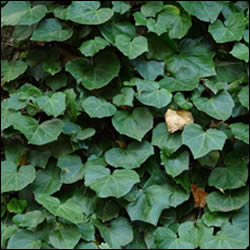
Hedera helix
The common ivy, also known as English ivy, European ivy, or just ivy, native to most of Europe. A very vigorous plant that can easily become invasive; it needs heavy and vey regular trimming to remain in shape.
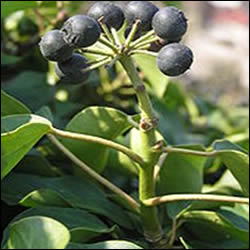
Hedera helix ‘Gnome’
Very small black green leaves which turn purplish in winter, has very petite three lobed leaves with a subtle light border and dense plant growth.
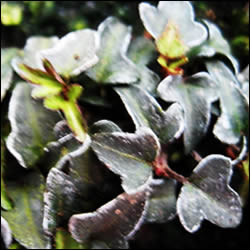
Hedera helix ‘Hahnii’
A bushy form, with branching at the tips. Hahn's Ivy is a dense-branching form of English Ivy (Hedera helix). This evergreen, vining groundcover does best in partial shade and is also an attractive addition to container gardens.
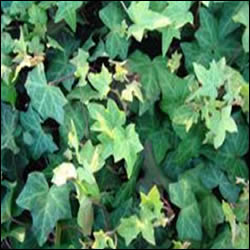
Hedera helix 'Birdsfoot'
This is named for its green-grey elongated leaves that resemble the shape of a bird's foot. This ivy has a tendency to grow more upright.
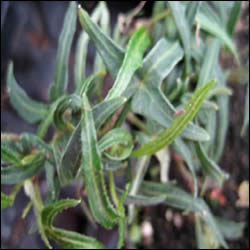
Hedera hibernica
The common name Atlantic ivy or Irish ivy, is a woody vine native to the Atlantic coast of Europe. Frequently found growing freely in the UK, like helix it is a vigorous plant but with slightly more attractive foliage.
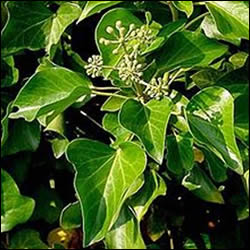
Hedera nepalensis
The Himalayan ivy, is a species of perennial Ivy with attractive slightly mottled foliage but rather overly well-spaced leaf shoots.
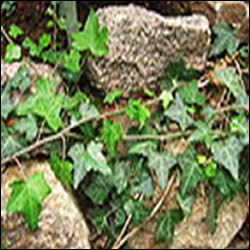
Growing as bonsai:
- It is a readily available, easy to grow plant, but not easy to train.
- Not easy to control.
- Does not produce a worthwhile trunk for very many years and does not respond well to wiring.
- However it is a very good candidate for informal group plantings, small and quite large. It is also very versatile in that the smaller clumps or groups look well as accent plantings.
- As ivy grows around most trees it is very appropriate to see it as a companion plant; however it must be trimmed very frequently.
Ivy has alternate 3 - 5 lobed or non-lobed leaves in a variety of colours. Ivy shows two distinct stages of growth. In the juvenile climbing stage, Ivy produces adventitious rootlets, lobed leaves and minute hairy young shoots. In the adult stage however, they produce broader ovate leaves. When styling Ivy as bonsai, it is important to try to keep the foliage consistent by repeatedly pinching out the adult foliage to keep only the juvenile lobed leaves.
- Position ideally in partial shade though Ivy will cope with most situations.
- Feed regularly throughout the growing season.
- Repot when needed preferably in spring although Ivy are resilient enough to be repotted at any time. They do not produce particularly extensive root systems below ground; use a standard soil mix.
- Prune back hard repeatedly throughout the growing season to establish a central trunk; trim out old foliage unless required.
- Propagation in summer is easy. Root semi-ripe cuttings of juvenile growth to obtain plants with a trailing habit; use adult growth to obtain plants with a more bushy, tree-like habit.
- Red spider mites, scale insects, aphids and leafspot can be a problem.
- Styling Informal upright forms and cascade forms in all sizes.
Makes an interesting and unique bonsai with minimal effort
